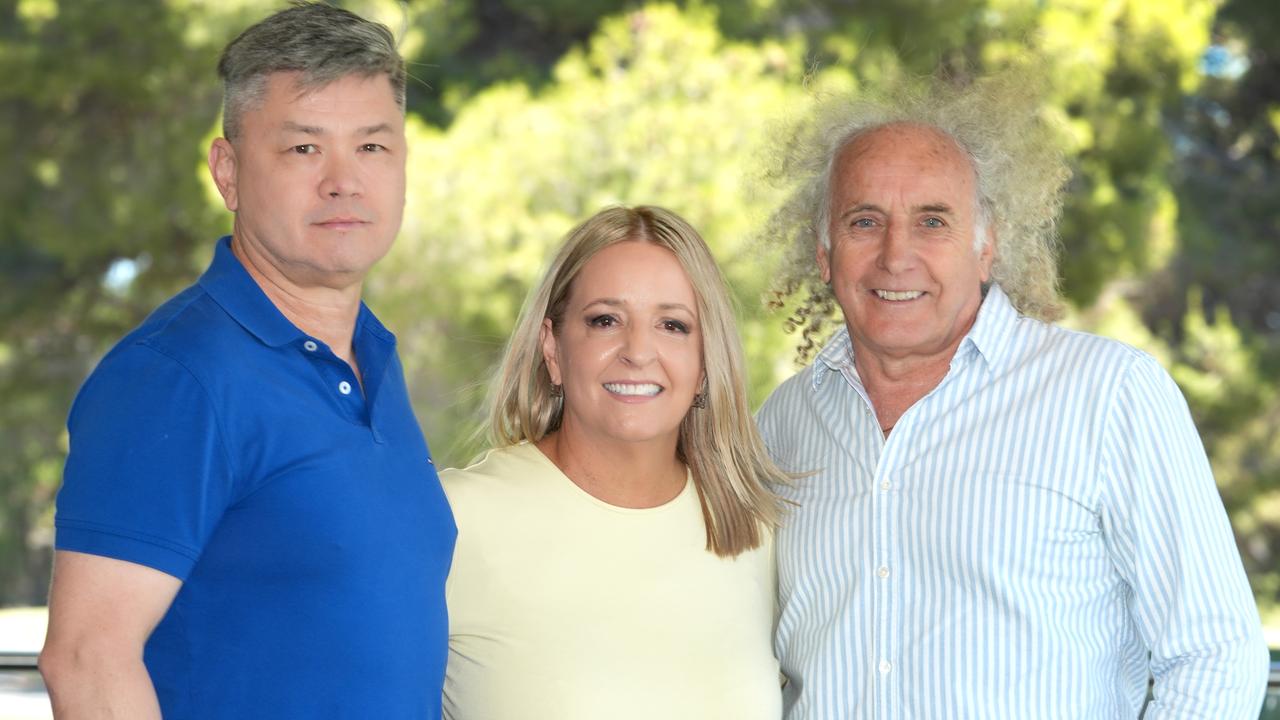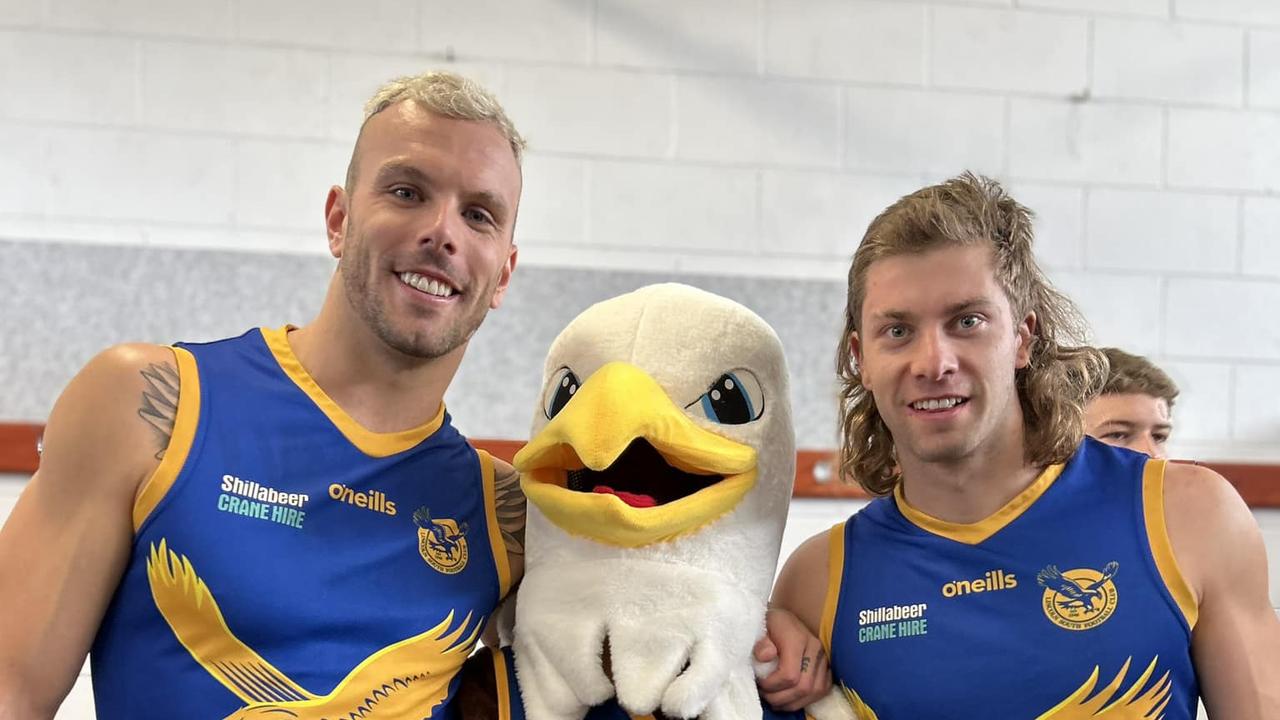SA Amateur Football League is tackling challenges of 2016 season head on
THE SA Amateur Football League just endured one of the toughest seasons in its 106-year history. But in this exclusive interview, SAAFL chief executive John Kernahan says the league has come out ‘stronger and wiser’
- Rosewater Football Club dumped from SAAFL due to player violence
- Troubled Rosewater faces challenge to rebuild culture
- Junior Grand Final called off after player allegedly kicked in the head
THE SA Amateur Football League has 11,000 young men and women involved in sport each week but it has just endured one of the toughest seasons off field in its 106-year history.
There have been accusations of social drug taking among players and a vicious assault on a senior umpire, which resulted in a 20-year ban on 300-game Rosewater FC captain Adam Rumbelow. A Rosewater junior was also handed a 22-game suspension after pleading guilty to kicking an opponent during the Metro West Junior Football League under-16 grand final, which is governed by the SANFL.
But in this exclusive interview, SAAFL chief executive John Kernahan says the league stood up to the challenge and came out “stronger and wiser”.
DR: How did SAAFL’s come through a tough year off field?
JK: It was tough off field but we came through it a stronger if not a wiser league. We don’t throw the baby out with the bathwater just because we’ve had a couple of bad news stories.
With the number of players we have representing our league on any Saturday, we’re bound to have some people who aren’t willing to participate in the manner we expect.
Our executive management team is led by president Mark Johnstone (since 2014) and he demands unity, he demands solidarity. He is a very strong organiser of our board and that cascades through the whole organisation.
The organisation is steeped in history, it’s steeped in tradition and it’s steeped in culture, so a fool or two is not going to unsettle that. We take comfort in that.
DR: The league faced accusations of widespread recreational drug-taking from two prominent figures in GAZA coach and Crows legend Andrew Jarman, and the league’s state coach, Sean Jackson. Was that criticism accurate and fair?
JK: I think it’s terribly unfair at any level to suggest any code, let along Aussie rules, is any more rife with drugs than the general community. We need to accept that the league is a microcosm of the community, we don’t shy away from that, but we’re not going to accept a responsibility that is not ours to address alone.
(Next year) we are going to start developing drug and alcohol awareness programs because one thing we do know is we have 11,000, 18- to 35-year-old men and women playing the game who are also prime targets for us to try to influence in terms of drug and alcohol awareness, mental health, respect for women, the “one-punch’’ program. They’re all really key social issues and we believe we can play a really strong role, so we’re developing a suite of education programs which we hope to roll out next year.
DR: Assuming for the moment that there is a problem, can social drugs be eradicated from amateur footy?
JK: We can’t answer that with any more qualified surety than SAPOL can claim recreational drugs can be eradicated from the general community.
DR: Is there any evidence of performance-enhancing drug use in SAAFL?
JK: We don’t have any evidence of that, only rumour and innuendo. The conspirators think that success must be bought or the physical attributes of a young man can’t come through hard work.
But neither I nor the executive have the time or inclination to treat those suggestions with anything other than contempt if they’re not substantiated.
DR: Rosewater Football Club captain Adam Rumbelow was suspended for 20 years after he punched umpire Craig Trewartha and the club was later dumped for what you described as a series of discipline problems. Both strong reactions, but were they appropriate?
JK: Firstly, he was found guilty by an independent tribunal and the members of those independent tribunal panels are suitably qualified to investigate and impose penalties.
If we had to undertake the same investigation and the same tribunal process today, I imagine the decisions would be exactly the same.
The feedback from our clubs is that we got it right, and ultimately, they are our jury. We’re answerable to them. Our clubs are fully aware what our agenda is and what the reaction will be if clubs don’t satisfy our expectations.
DR: Have you had widespread approval for both decisions?
JK: Absolutely. It’s never going to be unanimous because there are always going to be those who wish it was like the dark old days where anything goes. But this year, out of the 65 clubs, (players from) 33 clubs did not front the tribunal at all and 17 or 18 were there once. So, there’s more than 50 clubs which are on the same page (as the league).
DR: Can you call 2016 a successful year for the SAAFL?
JK: Every year is a successful year because we refuse to be defined by the actions of a few. What we will be defined by is how we react to remove those who aren’t willing to comply with the league’s standards. That’s our ultimate test.
We’ve been around for 106 years — 2016 wasn’t the worst year by any stretch, and we continue to survive. The best testimony to that is, and we’re really excited, that this year we welcomed Brighton FC and Morphettville Park FC to our competition and they joined Edwardstown FC from last year.
Those three clubs have joined our competition because we provided a safe environment to play football.
DR: I understand Rosewater FC will be re-accepted into the league next year. Are there special conditions?
JK: We’re not in the business of shutting down footy clubs, we’re in the business of promoting football. But at the same time our willingness to promote participation is not unconditional. The high standard of behaviour we expect, that’s unconditional.
So, Rosewater will have very strict conditions but no stricter than five or six other clubs that are on amended affiliation agreements because they have been testing the league’s patience in the last couple of years. The conditions are all the same.
DR: Were SAAFL officials surprised by the attack on umpire Craig Trewartha and later the incident where a Rosewater under-16s player kicked a Seaton opponent? (He pleaded guilty and was suspended for 22 weeks.)
JK: We were surprised and we were shocked. It took us 24 hours to catch our breath and assess exactly where we were going to head with it. After we did, we could take relative comfort in that we host 2500 football matches every year and if this was happening regularly we would have an enormous problem. But it’s not.
We can’t guarantee that we’re not going to have someone (break the rules), but what we can guarantee is that if someone does we will take appropriate action to weed those people out when they do.
The real comfort is knowing that 99.9 per cent of our members participate in a manner that will ensure their names never get mentioned at league headquarters.
In 2012 we had 200 reports head to the tribunal and in 2016 we had 65 — that’s a significant drop. So, when you consider what happened in 2016, would we rather it didn’t happen? Absolutely. But from where we’ve come from in the space of five years, we’re way ahead.
Our internal performance indicators have the league a long way in front of where we were five years ago and further ahead again than we were 10years ago.
DR: How have you achieved that?
JK: Simply by having a really low tolerance on the core behaviour and holding clubs accountable for individuals who can’t comply.
DR: Are there persistent violent offenders, either clubs or individuals, and is violence widespread or increasing in SAAFL? IF so, what can the league do to stop it?
JK: There are persistent offenders and the basis of a league initiative is to hold clubs accountable for the behaviour of their own offenders.
Australian rules is competing for a share of participants with codes such as soccer and basketball, as well as others that are considered “bruise-free” sports.
Men and women who play Australian rules do so and accept there is an element of risk in playing football, but those acceptable risks do not include being victim to behaviour that if it happened on the street would land the attacker in jail.
DR: Where does SAAFL sit in Adelaide’s footy landscape and how is the relationship with SANFL?
JK: Clearly, the two AFL clubs in South Australia are the kings of the jungle in Adelaide.
We get that, but what’s often lost in this discussion is that on any given weekend we directly or indirectly touch 80,000 people — players, umpires, volunteers, parents, girlfriends, boyfriends. So, in our social capital we are as important in the football landscape as anyone.
The two AFL clubs ... are the prettiest girl at the dance, but when you look at our core numbers and look at the possibility of influencing the young people of Adelaide, our role is an important as any.
We are the last bastion of community football in Adelaide.
We have worked strategically to become more visible, and businesses that either don’t quite fit the AFL scene are being drawn to us as they come to recognise our position among the community.
Our 77 member clubs, either directly or indirectly, touch anything up to 80,000 people on any given Saturday or Sunday and the responsibility that comes with that status is enormous.
DR: What does the next five to 10years hold for the SAAFL?
JK: The league is 106 years old and we’ve endured challenges before, and no doubt we will be faced with them again. But our biggest challenge at the moment is to have the state and federal governments identify our organisation as more than just a football league but as a representation of the community.
Our social capital is enormous so we play a role in shaping the community in general.
We’re opening up our doors to new arrivals, including refugees, to participate as officials, and we will continue to engage with the Department of Corrections to offer pre-release offenders an opportunity as goal, boundary or central umpires to help them re-assimilate into the community once released from prison.
DR: Can we expect any innovations next season?
JK: What we plan to do is to line up the C-grade teams with their A-grade teams so there will be triple-headers on any Saturday, so there’s a full day of football at a club from 10 o’clock in the morning. So the clubs don’t have to split their recourses by going off to another ground.
We’ve been dabbling in this for several years and I think the statistic is something like 75 per cent of games last year were triple-headers.
DR: How much does it cost to run the SAAFL each year?
JK: In excess of $1m. We have a good, strong base in terms of sponsors and they allow us to run, but we want to be self-sufficient. We are looking at a couple of initiatives, which I’m not at liberty to detail now, which we think will allow our business to be a two-tiered business and run football as well as another initiative that will provide revenue.


